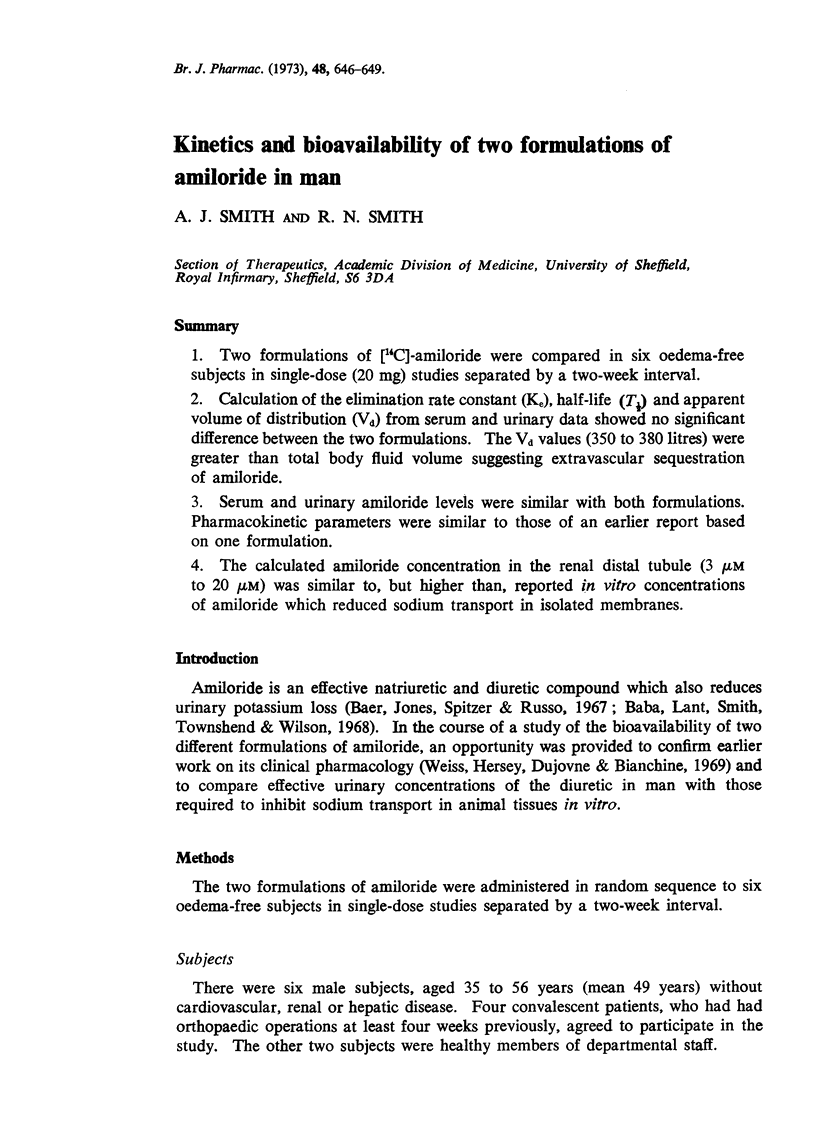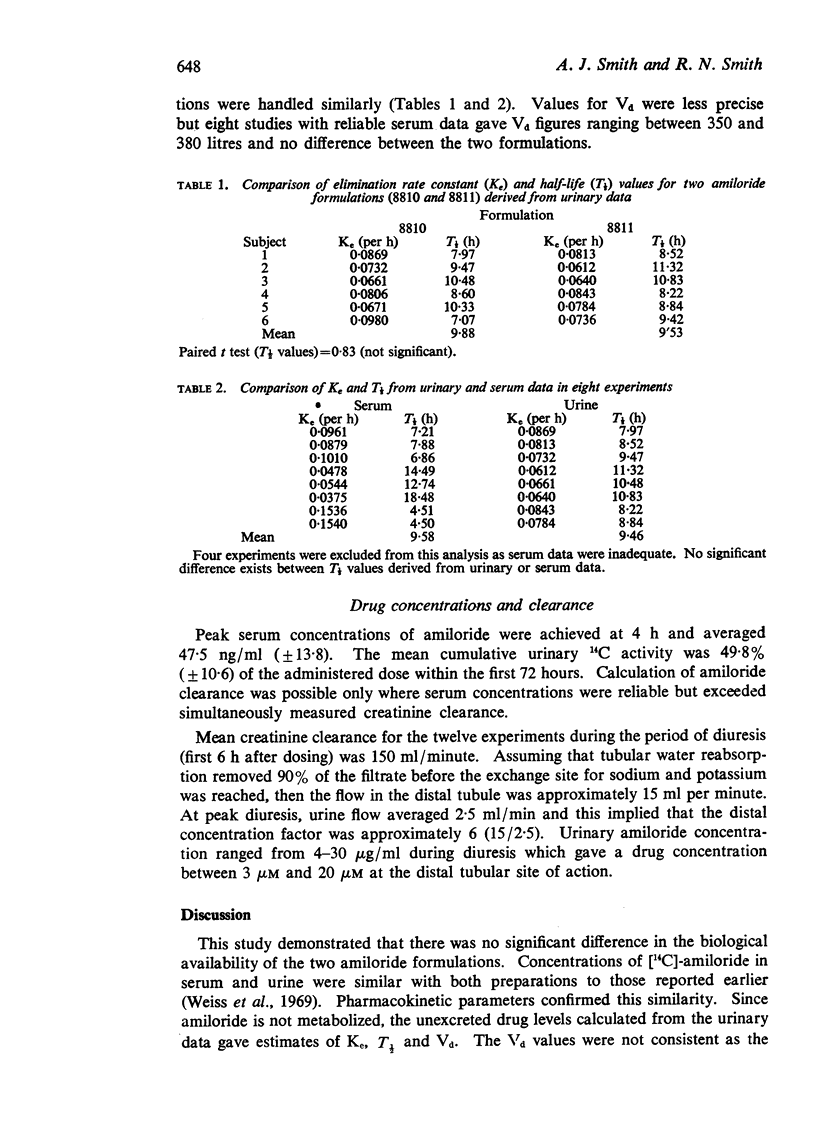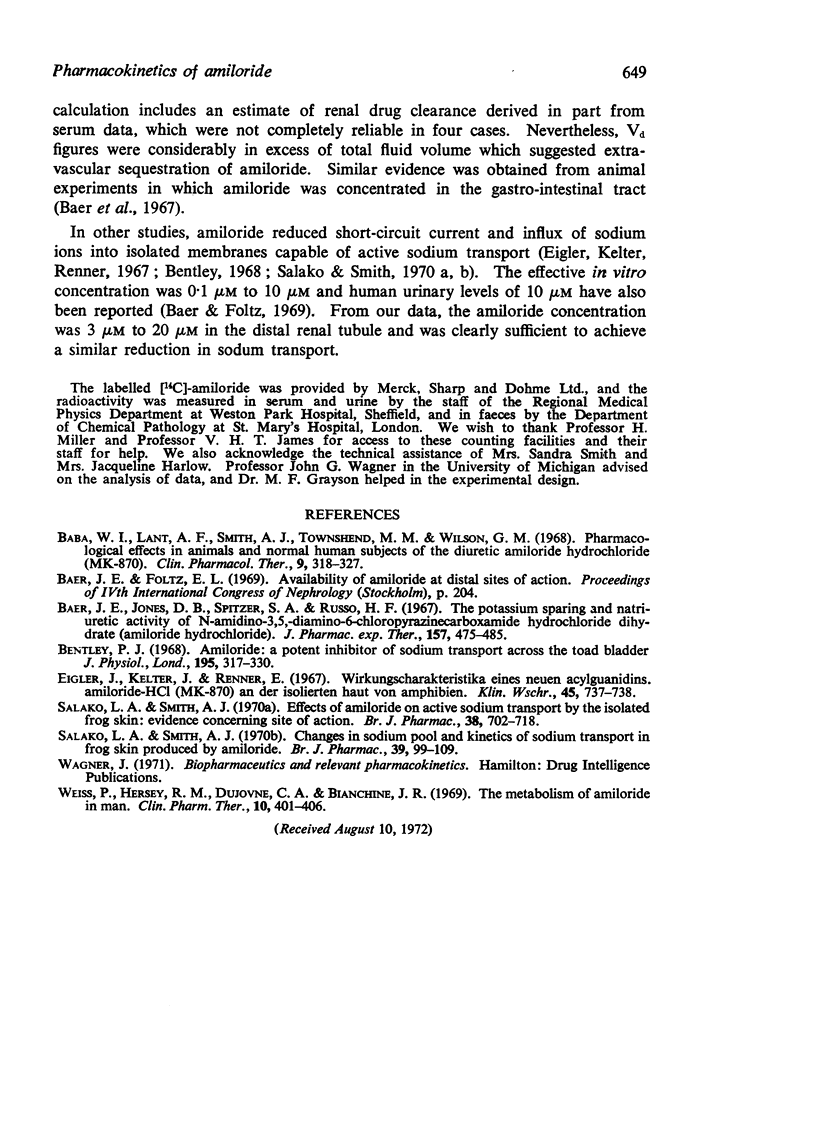Abstract
1. Two formulations of [14C]-amiloride were compared in six oedema-free subjects in single-dose (20 mg) studies separated by a two-week interval.
2. Calculation of the elimination rate constant (Ke), half-life (T½) and apparent volume of distribution (Vd) from serum and urinary data showed no significant difference between the two formulations. The Vd values (350 to 380 litres) were greater than total body fluid volume suggesting extravascular sequestration of amiloride.
3. Serum and urinary amiloride levels were similar with both formulations. Pharmacokinetic parameters were similar to those of an earlier report based on one formulation.
4. The calculated amiloride concentration in the renal distal tubule (3 μM to 20 μM) was similar to, but higher than, reported in vitro concentrations of amiloride which reduced sodium transport in isolated membranes.
Full text
PDF



Selected References
These references are in PubMed. This may not be the complete list of references from this article.
- Baba W. I., Lant A. F., Smith A. J., Townshend M. M., Wilson G. M. Pharmacological effects in animals and normal human subjects of the diuretic amiloride hydrochloride (MK-870). Clin Pharmacol Ther. 1968 May-Jun;9(3):318–327. doi: 10.1002/cpt196893318. [DOI] [PubMed] [Google Scholar]
- Baer J. E., Jones C. B., Spitzer S. A., Russo H. F. The potassium-sparing and natriuretic activity of N-amidino-3,5-diamino-6-chloropyrazinecarboxamide hydrochloride dihydrate (amiloride hydrochloride). J Pharmacol Exp Ther. 1967 Aug;157(2):472–485. [PubMed] [Google Scholar]
- Bentley P. J. Amiloride: a potent inhibitor of sodium transport across the toad bladder. J Physiol. 1968 Mar;195(2):317–330. doi: 10.1113/jphysiol.1968.sp008460. [DOI] [PMC free article] [PubMed] [Google Scholar]
- Eigler J., Kelter J., Renner E. Wirkungscharakteristika eines neuen Acylguanidins--Amiloride-HCL (MK 870)--an der isolierten Haut von Amphibien. Klin Wochenschr. 1967 Jul 15;45(14):737–738. doi: 10.1007/BF01746103. [DOI] [PubMed] [Google Scholar]
- Salako L. A., Smith A. J. Changes in sodium pool and kinetics of sodium transport in frog skin produced by amiloride. Br J Pharmacol. 1970 May;39(1):99–109. doi: 10.1111/j.1476-5381.1970.tb09559.x. [DOI] [PMC free article] [PubMed] [Google Scholar]
- Salako L. A., Smith A. J. Effects of amiloride on active sodium transport by the isolated frog skin: evidence concerning site of action. Br J Pharmacol. 1970 Apr;38(4):702–718. doi: 10.1111/j.1476-5381.1970.tb09878.x. [DOI] [PMC free article] [PubMed] [Google Scholar]
- Weiss P., Hersey R. M., Dujovne C. A., Bianchine J. R. The meetabolism of amiloride hydroloride in man. Clin Pharmacol Ther. 1969 May-Jun;10(3):401–406. doi: 10.1002/cpt1969103401. [DOI] [PubMed] [Google Scholar]


